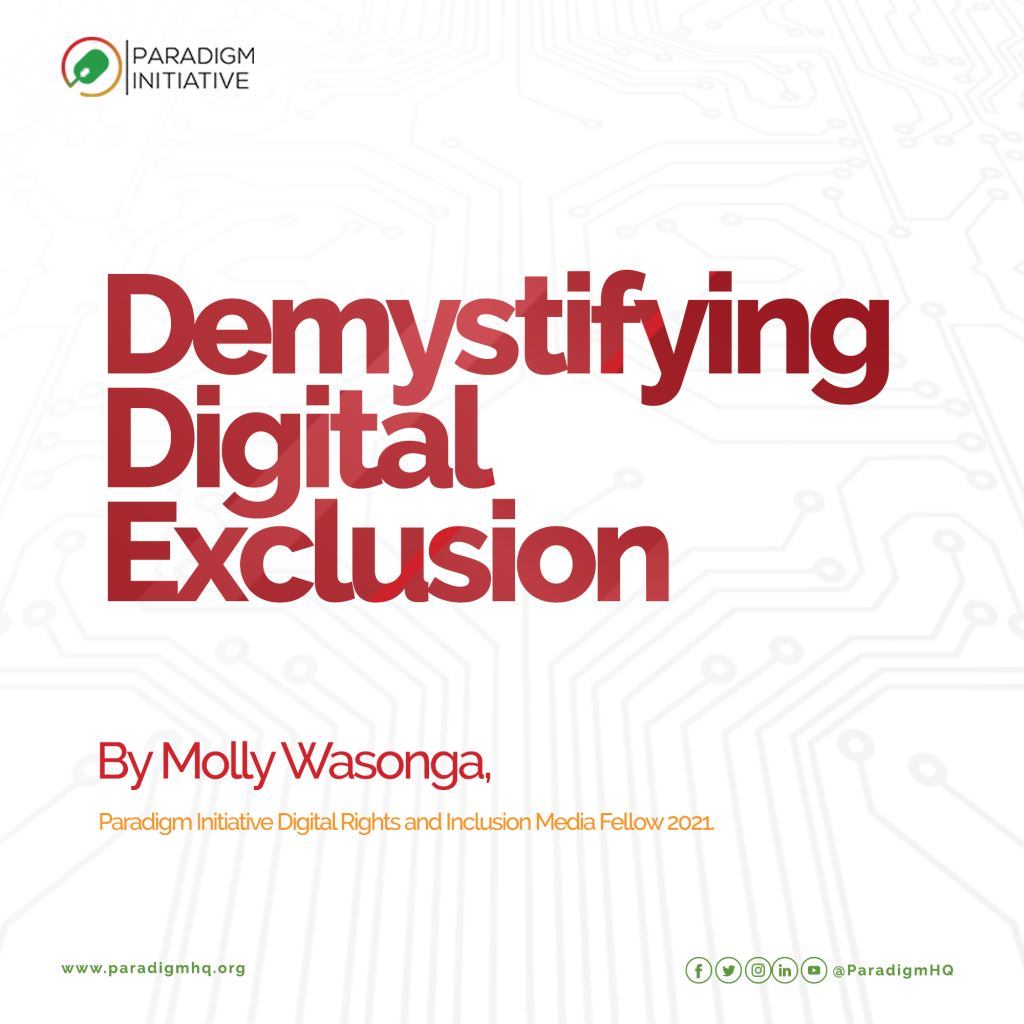IGI Global defines digital exclusion as the lack of access to, and use of, ICT resources or just the lack of technology resources and access thereof.
Put simply, digital exclusion is the inability of individuals and groups to access and use information and communication technologies, or the incapability to use the internet to do things that benefit individuals or organizations. This inability to access information can be termed as a disability.
Information Communication Technologies have contributed a lot to change our everyday life. From letters to e-mails, market shopping to on-line shopping, classroom learning to e-learning, etc. Yet, a significant proportion of the population is still digitally excluded.
These populations, excluded digitally, are considered socially disadvantaged and are therefore locked out of self-service channels. This matters as those who are excluded digitally are also far more likely to be disadvantaged according to many other social and economic measures. The digital divide exacerbates inequality.
Impacts
Effects of the digital divide are immensely felt in the following areas: Education, job opportunities, communication, politics, consumer satisfaction, health Information, community Involvement, government, and emergency information
Causes of digital exclusion
Although access or lack of it is believed to be the major cause of the exclusion, there are other contributory factors.
Choose.co.uk reports that the four main factors contributing to digital exclusions include; Access: both physical and financial, Motivation: including understanding or appreciation of the benefits, Skills: including whether people have any available means of learning ICT skills and Confidence: including fears of fraud and online security.
Impacts
The effects of the digital divide are felt in various areas of life. These include education, job opportunities, communication, politics, consumer satisfaction, health Information, community involvement, government, and emergency information.
As Stanley Chege, GCIO at Jubilee Insurance observes, ‘digital gaps’ or differences in the ability to access data and digital technologies are widening both between and within countries.
“Internet usage ranges from as high as 87 percent of the population in high-income nations to as low as 17 percent in low-income nations. While nearly four-fifths of countries have implemented regulations on e-commerce and data protection, government responses continue to be outpaced by the speed of digitalization,” he avers adding, “Public officials need to narrow this regulatory gap, not least due to technology’s growing influence on human interaction, health, and belief systems.”
With Covid-19 came the surge in internet usage as organizations shifted to work remotely and learning had to be conducted online. But as the United Nations University reports in a blog, the transition to work, learn, and socialize online has not been easy.
“Our current experience with COVID-19 shows that the transition to these extraordinary circumstances is far from smooth. More specifically, people without access to ICTs are even more disadvantaged than before. In many cases, the lifeline provided by technologies is only available to those who can access them,” says the blog.
The exclusion, therefore, means that when so much is expected to be happening online, an equal much is not happening due to the inability to go online.
Solution
Having known the many factors contributing to the digital divide, what can be the solution to it?
Eddie Kabiru, the Principal Officer at Bond Insurance Agency notes that there cannot be a one size fit solution for the divide. He, however, opines that policies directed towards inclusion in the digital space would go a long way to overcome many of the barriers preventing the said inclusion.
“The provision of technical support to assist people with getting online is vital. Stakeholders should collect quality digital data and establish a robust baseline for a minimum digital living standard,” he averred. Adding, “Victims of digital exclusion should be co-producers of these strategies.”
Kabiru runs a digital insurance agency and has first-hand experience working with those digitally excluded.
Digital Divide Council recommends the below five ways to help curb digital exclusion.
1. Increasing internet affordability. This will ensure that those who cannot afford the cost of the internet and those locked out due to the cost of owning or accessing internet gadgets are included.
2. Empowering users. “To see the full potential of the internet and its impact on the world, we must take advantage of its capabilities. Most of the people who use the internet have a limited understanding of some of its use cases. For instance, Google helps people find information that they would not have access to. An issue that broadens the digital divide is ‘participation inequality’ where users lack the skills to use it,” reads the Top Five Digital Divide Solutions in part.
3. Internet infrastructure development like providing a public safety net to offer internet access to facilities like libraries, health, and welfare service, and improving the relevance of online content will help curb digital exclusion.
By Molly Wasonga, Paradigm Initiative Digital Rights and Inclusion Media Fellow 2021.


